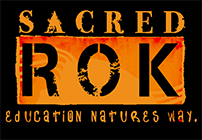From Ron Kauk:
February 21, 2010. El portal. Hello from Yosemite, where we have had intermittent spring-like conditions for climbing, yet just enough rain to keep the water flowing. In our last newsletter, we wrote about our project on how the beauty and appreciation of nature can be found even in the easiest of climbs, by focusing on breathing. It is as if in every climb, there is an element of learning the simple parts all over again, even as we walk to the climb. Every day, we learn to walk.
Every day I am struck by new insights that come about when we think of the world in terms of its simple elements. Here is a new one.
Yesterday, I introduced my friends Kenji and Nancy to Les and Bill, first nation people of the Miwok tribe whose lineage has been here for all of human memory. Les and Bill have been actively involved in keeping the original ways of ceremony that is connected to their responsibility of taking care of Yosemite and all of its natural elements.
For many years, I have been given the privilege of being a helper of the ceremonies. This experience has been at the core of my on-going education. Les in particular is keenly interested in reviving the Miwok language, which is on the verge of extinction. How do you revive a language that has just one or two speakers? I wanted Les to meet Kenji because Kenji is a linguist and knows about these things.
We talked for a long time about what to do in terms of education to bring back some of the Miwok language. We talked about the role that language plays in culture. Linguists go about recording, documenting, and writing about the dying languages, but what can they do if the community wants to bring it back? What if a biologist, instead of putting the last specimens intoa plant press, were to put them into a nursery? What kind of nursery would we want?
A nursery of this kind is now being made possible for the Miwok language through an amazing property arrangement in which a portion of Yosemite Valley has been set aside for native ceremonial and educational purposes. Les wants the educational purpose to be the revival of the language. So, Kenji and Les talked about what it means to revive a language, what it means to talk, the most basic element of human being.
Talk means many things, because language does so many things for us - it brings order to the mind, it helps communicate with others, and through stories and songs, it builds culture. We talked about all of these things and Kenji helped put these into what it could mean in terms of an educational curriculum - what kinds of goals, and how to get there.
But in the end, after all this talk, Kenji asked Les, “What does language mean to you?” and Lesreplied, “ It’s the bringing of people together. The Miwok, the Chukchansi, language brings the people of the language together, and it brings the native people together.” As the language has been reduced to the remnants of a few words and phrases, Les was pointing to the sadness of the silence for the community.
Words, phrases, songs. These elements of talk are what Les sees as necessary to the rebuilding of the native community. I was struck by the parallels with the inspiration of Sacred Rok, where breathing, walking, and mindful appreciation of nature are the key elements for restoring our sense of nature. Learning to talk. Learning to walk. Perhaps we can start bringing some of these things together. The conversational sphere created on this day resonates deep into what connects all of us as human beings.


